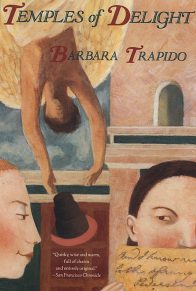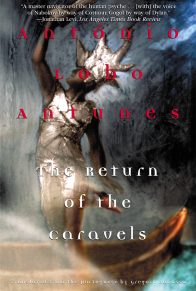THE CLOUDS WERE BLACK CATHEDRALS, TALL and Gothic, about to topple at any moment on to the city of Geneva. Further away, on the far slopes of the Savoyard Alps, the storm was angrily whipping up the wind, unsettling the calm of Lake Leman. Trapped between the sky and the mountains, like a hunted animal, the lake fought back, kicking like a horse, clawing like a tiger and lashing out with its tail like a dragon. In a hidden opening between the rocks that sunk into the waters lay a small beach: barely a strip of sand in the shape of a crescent moon, waning with the rising tide and waxing with the ebb. On that stormy July afternoon of 1816, a small boat docked at the western tip of the beach, at the head of the pier stranded like a ghostly skeleton overflown by gulls. The first to disembark was a lame man, trying to keep his balance so as not to fall into the lashing waters whose fury shook the pier’s weak structure.
Once his feet touched the ground, the traveller grabbed on to one of the piles and held out a hand to help his companions disembark: first two women and then another man. The group started to walk along the pier towards dry land like a troop of clumsy but cheerful tightrope walkers, without waiting for the third man who had been left to manage, not without difficulty, on his own. They walked in single file against the wind and up the slope until they arrived, sodden, merry and out of breath, at the Villa Diodati, the house on the top of a small cliff. The third man trotted along with short, quick steps, glum and not lifting his eyes, like a dog following his master’s tracks. The women were Mary Wollstonecraft Godwin and her stepsister, Jane Clairmont. The former, in spite of being still unmarried, claimed the right to call herself Shelley, the surname of the man who was to be her husband; the latter, for reasons less well known, had renounced her given name and called herself Claire. The men were Lord Byron and Percy Bysshe Shelley. But none of these characters matters much in our story, except the man who disembarked last, and who was walking all on his own, far behind: John William Polidori, Lord Byron’s obscure and despised secretary.
The events of that summer in the Villa Diodati are sufficiently well documented. Or at least some of them are. A stack of recently discovered letters may bring to light certain other events which have remained unknown until this day, concerning the life of Dr Polidori, the shadowy author of The Vampyre. And even more importantly, they may offer reasons for his tragic and early death.
As everyone knows, The Vampyre is the first vampire story, the cornerstone of the countless succession of stories that have made vampire lore a true literary genre which peaked (at least as far as celebrity is concerned) with Brain Stoker’s all-too-famous Count Dracula. But no vampire story exists that does not owe a debt of gratitude to the satanic Dr Ruthwen fathered by John Polidori. However, the events that surround the birth of The Vampyre appear to be as mysterious as the tale itself. It is a truism to say that there is nothing as open to doubt as paternity, and yet this truth can be extended quite naturally to all literary offspring. Even though repeated cases of plagiarism (accusations old and new, whether proven or imaginary) seem to be part of the history of literature since its very beginnings, the controversy over The Vampyre did not stem from copyright claims. On the contrary, for some strange reason, no one wished to claim as his or her own creation the evil creature that was to break new literary ground. The novella was published in 1819 under the name of Lord Byron, but here a paradox must be noted: while Byron accepted responsibility for the doubtful `pregnancy’ (so to speak) of Claire Clairmont, he furiously and vehemently rejected all responsibility for The Vampyre, placing the blame entirely on the shoulders of his secretary, John William Polidori. That is how the story was told.
And yet a tale as dark as The Vampyre could not, of course, have had a birth less murky than its contents. We know that, after Polidori’s death, a considerable number of letters, legal documents and other writings were found in the doctor’s possession, which were to contribute various undesirable facts to the biographies of several illustrious persons who had every right in the world to wish upon themselves an undisturbed posterity.
The correspondence in question is not new. Or rather, the absurd and scandalous controversies – juridical, scholarly and even political – to which these documents were subjected are well known to all. The arguments concerning their authenticity turned into something like a war. Expert opinions were published, as well as the results of calligraphy tests, ambiguous depositions of witnesses, and the indignant denials of those parties more or less implicated in the affair. But what was never, ever, made public was the contents of a single one of the letters, because – it was said – these perished in a fire that destroyed the archives of the court in 1824. All this was to be expected. But scandals, though giving the impression of being ubiquitous and everlasting, are often as fleeting as the time that separates one incident from the next, and they invariably end up buried under tons of paper and drowned in rivers of ink. The adamantine silence of all those involved, the progressive lack of interest of the public and, finally, the death of the main players relinquished into oblivion the controversial papers of which, it was said, nothing remained but ashes. The only document to survive was the no less dubious diary of John William Polidori.
As the reader will no doubt have guessed, an inevitable `however’ is forthcoming. Indeed, for entirely fortuitous reasons, some time ago I found myself in Copenhagen, where I was approached by a delightful character who introduced himself as the last of the teratologists, one of those commentators on ancient texts concerning monsters, a sort of archaeologist of horror, a researcher into whatever testimonies might have been left behind by the mythical `terators’ in their dreadful sojourn on Earth. In a word, my acquaintance was a taxonomist of unique and fearful human prodigies. He was a pale, thin man, with the elegance of another age. Ours was a brief conversation on a premature Danish winter night, in the Norden Caf” across from the Stork Fountain, at the end of Klareboderne Street. He told me that he was aware of a recent article of mine on a subject dear to his heart, and he had felt impelled to swap titbits of scholarly information with me. Since what I could offer him was not much, I was forced to confess that I was little more than an amateur in teratological matters. He seemed surprised that, as a native of South America, I had not heard the theory that much of John William Polidori’s correspondence had ended up in an old Buenos Aires mansion that had once belonged to a certain aristocratic family with distant British roots. My colourful acquaintance had never been to Buenos Aires and the information he had was scant and imprecise. Nevertheless, with merely his vague description of the house and its location `close to the House of Congress’, I had no doubt about its identity. It was a dilapidated mansion which, through a curious coincidence, I knew well. Countless were the times I had crossed the threshold of this ancient house on Riobamba, whose vaguely Victorian architecture never fitted well with the features of Buenos Aires. I had always been surprised by the disproportionate palm tree that, in the very centre of the city, rose above its sinister garden walls, and by the wrought-iron fence, fierce and threatening, that guarded the patio, efficiently dissuading casual salesmen from venturing beyond the entrance.
As soon as I returned to Buenos Aires, I repeated our conversation to my friend and colleague, Juan Jacobo Bajarl”a (surely our most knowledgeable scholar in the realm of Gothic literature), and he immediately offered to be my Charon on the infernal journey which began at the gates of the house on Riobamba. Let me say at once that, thanks to his wit as a lawyer and his wiles as a writer, we reached, after seemingly endless enquiries, our desired goal.
Having given my word to be discreet, I must not reveal any more details concerning the method by which we finally arrived at the alleged `documents’. And if I protect myself behind the wary adjective `alleged’ and behind the cautious quotation marks of `documents’, I do it merely through a genuine uncertainty: though I cannot swear that these papers were apocryphal, nor can I affirm that they were not, because, to tell the truth, I never even had the opportunity to hold them in my hands.
During our meeting in the old house, I saw none of the original documents. Our host (whose identity I will not reveal) partly read out loud and partly glossed over the contents of numerous folders, consisting of practically illegible photocopies. The large dark basement in which we found ourselves could barely contain our amazement. Since we were not allowed to keep any material proof of these documents – neither a copy nor even a note – what follows is not a literal recollection but a laborious literary reconstruction of what we heard. The story that transpired from the succession of letters – fragments barely – is as fantastical as it is unexpected, suggesting that the facts concerning the origin of The Vampyre might lead to other incredible findings that would shed new light on the very notion of literary paternity.
As far as I am concerned, the possible apocryphal nature of this correspondence is unimportant. Literature (it is sometimes necessary to resort to a platitude) has no other value than to be literary. Whoever may have been the author of the reconstructed tale that follows – whether protagonist, direct or indirect witness, or mere narrator – I have no doubt that the whole thing is but an infamous invention concocted by a monstrous mind: a mind whose rightful place in the realm of the grotesque I leave to those more versed than I in teratology. Concerning therefore the truth (and, even more, the verisimilitude) of the events I am about to reveal, I must subscribe to the words of Mary Shelley in her preface to Frankenstein: `I shall not be supposed as according the remotest degree of serious faith to such an imagination; yet, in assuming it as the basis of a work of fancy, I have not considered myself as merely weaving a series of supernatural terrors.’
Whatever the case may be, our story begins on the shores of Lake Leman in the European summer of 1816.
Copyright ” 1998 by Federico Andahazi. Translation copyright ” 2000 by Alberto Manguel. Reprinted with permission from Grove Atlantic, Inc. All rights reserved.















